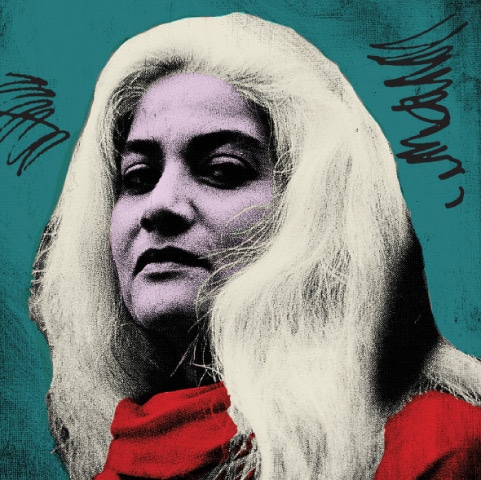
There is always someone in the family or one’s circle of friends who becomes the designated storyteller, who possesses the art of taking ordinary facts and enthralling the audience with suspense, humour or high drama. As the old saying goes, “the truth is in the telling.” The raavi, the raconteur, the daastaango were the centre of all social gatherings. A bazaar in Peshawar is named after the Qissakhwans of Peshawar, who entertained travellers in cafes with stories. Abd al-Nabi Fakhr al-Zamani’s The Tiraz al-Akhbar, was a manual for storytellers. The Daastaan-i-Amir Hamza has been told and retold in several versions, including the illustrated Hamzanama of Emperor Akbar. Ghalib Lakhnawi wrote in 1855, “There are four things, in this daastaan: battle, courtly assemblies, enchanted worlds and trickery [razm, bazm, tilism aur ayyari ].”
Storytelling is the oldest form of the transmission of knowledge, for instance, visual storytelling from cave paintings, Egyptian and Assyrian reliefs, to narrative painting, photography and cinema. Oral histories and religious beliefs, moral fables, fairy tales and poetry were gradually preserved in written form. However, even in the written form, the voice of the narrator is always present. For every story there is a storyteller, whether in a scientific paper, an account of historical events or fiction writing. And where there is a storyteller, there is inevitably a point of view determined by the context of time, social values and intention.
Narration aims to influence the readers or listeners, to make them share the narrator’s perspective. In its most innocent form, poets or songwriters want the listener to understand their emotional experience. Its more manipulative extreme may be the writing of national histories which, while factual, leave out events that do not conform to the desired self-image of a nation.
The idea of a point of view is a natural way of viewing anything. The artist and the photographer make an aesthetic choice about what to include and what to exclude in a composition but, as Elliott Eisner says, “The arts not only teach that there can be more than one solution to a problem, but also that there are many ways to see and interpret the world.”
William Faulkner, in his novel, The Sound and the Fury, presents the downfall of the aristocratic Compson family from four different perspectives. Lawrence Durrell does the same in The Alexandria Quartet. One of the most famous and influential of multiple storytellings is the Thousand and One Nights or Alif Layla wa Layla, its original Arabic title, which created a unique literary genre. It tells the story of Scheherzade, who recounts stories all night to the ill-tempered monarch, Shahryar, who had vowed to marry a new virgin every day, and have the previous one executed. Scheherzade, a well-read, wise and accomplished woman, volunteers to marry Shahryar. Her mesmerising skill at storytelling keeps her alive night after night until Shahryar falls in love with her and is transformed into a benevolent monarch.
The appeal of A Thousand and One Nights is its structure, while the stories themselves were adapted or added to across the ages, from Sassanian times to its Persian form, from its Baghdad version with the addition of Khalifa Haroun-al-Rashid, to the Cairo version, adapting and incorporating ancient Egyptian folklore of demons and magicians. It became popular in Europe after it was translated into French in the 18th century, and then into English and other languages. It influenced many well-known European writers from Joseph Addison to H.G. Wells, and Halo Calvino DC Comics, Japanese literature, Manga Comics and a number of films, operas and music compositions, the most famous being Rimsky-Korsakov’s Scheherazade.
As Fakhr al-Zamani advises, the moral purpose of the storyteller is not to tell the truth but to “win the heart of some afflicted person and ease a frustrated mind.”
Durriya Kazi is a Karachi-based artist and heads the department of visual studies at the University of Karachi Email: durriyakazi1918@gmail.com
Published in Dawn, EOS, August 30th, 2020














































Dear visitor, the comments section is undergoing an overhaul and will return soon.